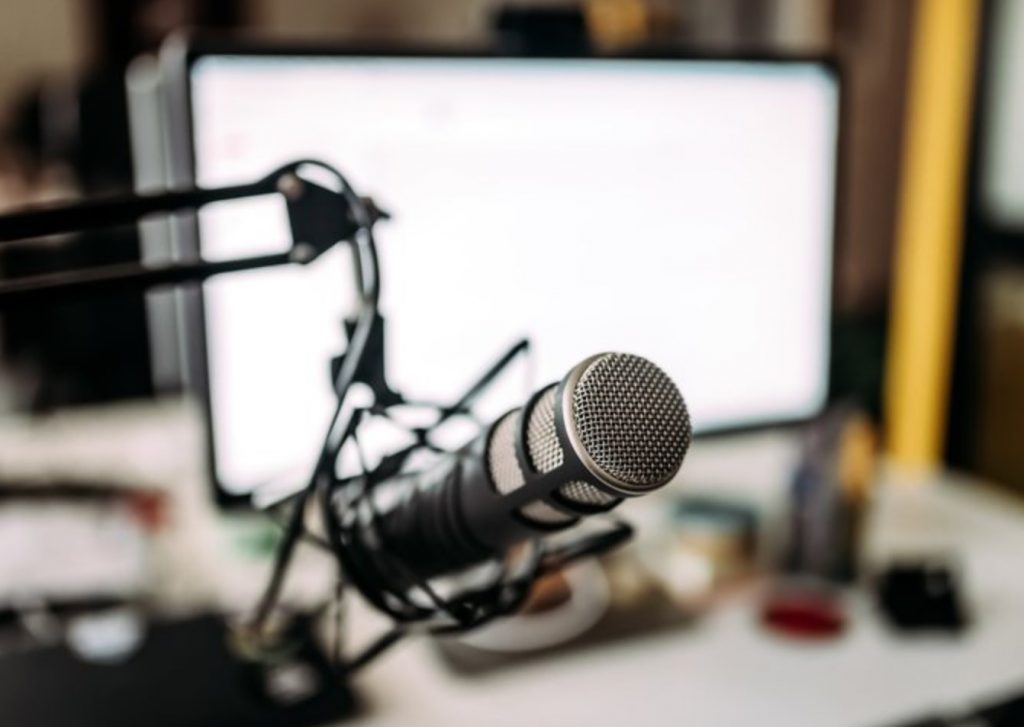Long back, people had the radio they could listen to while doing work, studying, or even while just lazing around. Now, in this hectic world, we have taken one step forward to revamping how we use the time listening to something by making use of podcasts.
Podcasts have always been audio content recorded in a studio and are generally informative in nature. There are genres in this with current events and science being quite popular. Here, people come together and discuss on-air, giving you engaging information which you can listen to while multitasking.
The only other content that gives good competition to podcasts is videos. Videos also work the same way but bear visual information to engage the users even more. If we go with the age-old debate if audio podcasts were better than video content or not, they’re pretty evenly matched.
Although some users prefer videos as it keeps them hooked, some audio podcast fans like listening on the go as it saves them time and prevents them from “binge-watching.”
You’d now expect the debate to stop there. But with that ongoing back-and-forth, there emerged a new form of a podcast that mixed both the requirements of the public. This was the “video podcast”, where the people hosting it are seen on screen.
So now the debate is different; which is better, audio or video podcasts?

Don’t say video podcasts can’t be listened to on the go!
Gone are the days where we used to complain about how the interface of watching videos is not seamless and can’t be handled while on the go. Watching videos have become less demanding with good streaming platforms and fluid buffer options.
YouTube Premium and Netflix, in fact, have playing options even when the phones are locked. Ads are removed for a better experience. But video podcasts may be uncomfortable while doing something strenuous like exercising or walking.
However, now you can multitask with video podcasts, just like you could with audio podcasts. There are various websites now that host a variety of podcasts like www.poddster.com
Video Podcasts can be integrated on both types of platforms
Before this, audio podcasts had multiple platforms where they could be uploaded but actual videos were uploaded only on YouTube. However, now video podcasts that have come up don’t have a crazy HD video with animation and unwanted fluff.
It is just the recording of the hosts speaking and discussing. This doesn’t take up much space and streaming this becomes as easy as recording an audio podcast. Video podcasts can be uploaded on platforms like YouTube Music. Soon, we may see IVM and Spotify integrate this option too.

Recording a video podcast is almost the same as recording an audio podcast.
This ties with our second point again as nowadays studios give the option of also keeping a camera on to record the discussion. Podcasts, whether audio or video, are supposed to always be great in terms of audio.
The audio quality is retained, but as a bonus, you’d get to see their faces and expressions. So if you’re thinking that preferring a video podcast means you’d be compromising on the sound quality, think again.
Looking at faces gives an emotional connection
Humans are social animals and we are hardwired to prefer faces over sounds. We even tend to subconsciously read other people’s faces and complement their words with them. This way we get a little more information than we’d have gotten with just the words.
If a host is talking about some funny incident, the incident would be doubly funny or hilarious if we could see their face. So, incorporating the facial aspect in podcasts would increase the podcast’s connection with the listener.

Videos have a broader reach
Videos are preferred more by the general audience as they’re more engaging. Videos can be made to play automatically and the human brain registers the visual content faster than the audio. If a person knowing that a certain personality is being hosted today, seeing them in the video would keep them twice as interested.
Can’t argue with the statistics
Podcasts hold the audience’s interest for long and videos would enhance it. This was seen in this report in Italy for the platform Audible where 6 out of 10 respondents listened to at least one podcast and the average listening time was 25 minutes in 2024, which was two minutes more than they did in 2019.
This is complemented by the total smartphone video consumption jumping from 47% the previous year to 54% in Q1 2018.

The effects of the pandemic
During the COVID-19 lockdown, the podcast hosts were unable to get to their recording studios. They held online streaming podcast sessions on platforms like Zoom, Meet, YouTube live where their faces were seen. This was at the time of isolation for people, and they found a little solace in seeing their favorite podcaster’s faces. This engaged the audience a lot.
Conclusion
The video podcasts give a personal touch to the whole thing, so it became immensely popular during the pandemic.
So, video podcasts have given a new twist to how the podcast concept was approached. Many people have started to prefer this and have been developing new ideas to make the whole experience better.
Podcasts have always been strong narrative devices and target the person’s imagination. Video podcasts enhance that entire aspect. The winning formula is now the one of “podcast or video”. They are complementary ideas now.
This opens a lot of doors for upcoming podcast creators where they can get creative in this field.

One podcast host who talks about creative hobbies actually shows the things she makes after she describes it. This allows audiences to tune in to the video at the end of the episode to get the maximum experience. Like that, there are endless possibilities while making video podcasts.
All in all, video podcasts are the new in, and it looks like that concept is here to stay.

